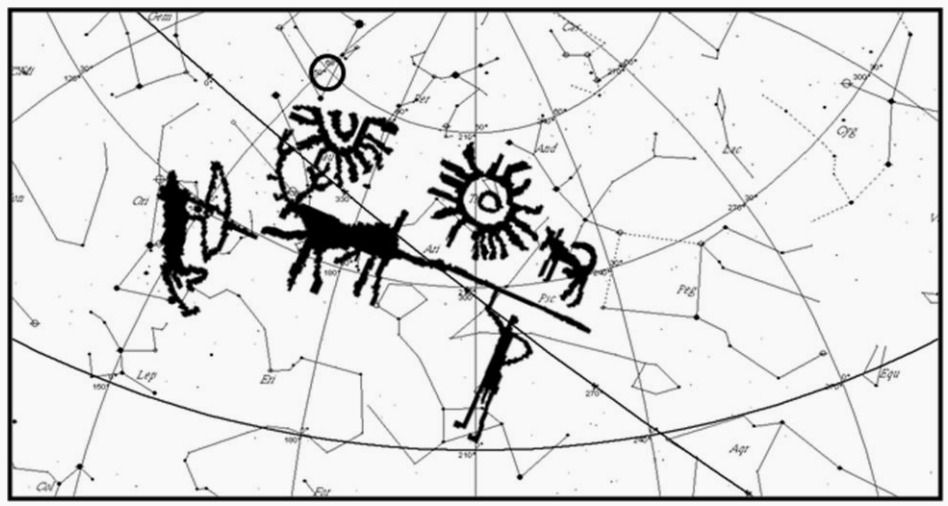

A team of astrophysicists have unearthed an ancient painting in the valley that is believed to be the oldest sky chart ever drawn, writes Neha Pant
From cave paintings, to wooden carvings, mankind has often used art as a tool to control the narrative of its civilisation. For centuries, scientists have interpreted this art in order to understand the history of our ancestors and the environment they loved in. Amongst all the art that has survived the centuries, there is little pre-historic report of astronomical observations. Apart from the Lascaux caves that showed lunar ephemeris 15,000 years old and a few similar sites in Spain and France that were even older, records of astronomical observations have been sparse. No wonder scientists are in awe of their latest discovery—a rock painting that is being hailed as the oldest record of a supernova and the oldest sky chart ever drawn.
Astrophysicist Mayank Vahia and his colleagues at the Tata Institute of Fundamental Research believe that, the rock painting which details two bright objects in the sky and a hunting scene is actually the first recorded instance of a supernova. In a study published in the Indian Journal of History of Science , Vahia details the basis of this assumption.
In the study, Vahia states that although rock art is difficult to date, this recently discovered painting was used facing inwards, in the wall of a house which was dated to around 2100 BC. The oldest settlement in the region goes back to 4100 BC. Therefore, it can safely be assumed that the rock painting was made between the two millennia. The painted rock was then used to make a new settlement (in which it was put backwards, perhaps because its significance was lost by then.) It stayed there until discovery.
After solving the age of the painted rock, Vahia and his team tried to understand why someone would draw two bright objects in the sky. It couldn’t be two suns (since we have always had only one). It could be the sun and the moon together, since it is possible to see both of them together in the sky, but they would never be this close together, especially it was a full moon. The logical explanation for the painting seemed to be a supernova as the second source of light, post its explosion, even if it happened to be at least a thousand light years away. (It would give enough light, equivalent to that of the moon)
https://soundcloud.com/theintersection/48-the-stories-in-our-stars-tribal-astronomy-in-ancient-india
The third step for the astrophysicists was to figure out if there was actually a supernova that could have exploded in the time period between 4100-2100 BC. It turns out that there was one, called HB9—which exploded near 3600 BC, almost 2,600 light years away. When it would have exploded, it would have appeared to the naked eye on earth as a glowing ball, slightly less bright than a full moon, thus giving the illusion of two moons as depicted in the painting.
But it doesn’t stop here, in the paper, Vahia has also detailed how the common place hunting scene on the rock is just a ruse. When placed against a sky chart, the scene fits the constellations that surrounded the supernova, thus also making it the oldest sky chart in the world.

Skymap of the region of HB9 in the sky chart for 5700 BC. To facilitate easy comparison with the drawing, rough patterns are drawn in the map. The constellation names as per current identification are given. The big spot at the center is the full Moon in the month of August in roughly 4500 BC, and the circle on the right indicates the position of HB9.
While all this seems very fascinating, the only way Vahia can legitimatise these claims is if he finds another rock painting from the region depicting an astronomical observation—a meteor shower with a similar sky chart, anything that proves this is not one big coincidence.